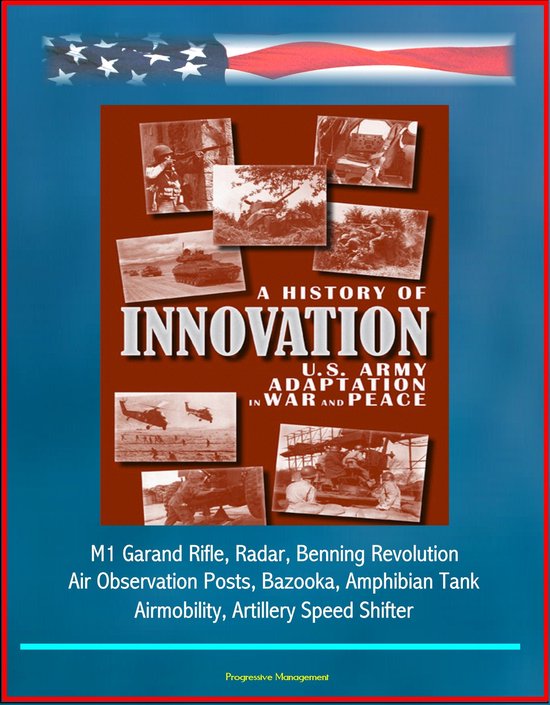
| Taal: | en |
| Bindwijze: | E-book |
| Oorspronkelijke releasedatum: | 25 januari 2015 |
| Ebook Formaat: | Epub zonder kopieerbeveiliging (DRM) |
| Hoofdauteur: | Progressive Management |
| Hoofduitgeverij: | Smashwords Edition |
| Lees dit ebook op: | Android (smartphone en tablet) , Kobo e-reader , Desktop (Mac en Windows) , iOS (smartphone en tablet) , Windows (smartphone en tablet) |
| Studieboek: | Nee |
In the United States, the U.S. Army has a long history of innovation, from the exploits of the Lewis and Clark Expedition at the beginning of the nineteenth century to the medical and engineering advances associated with the construction of the Panama Canal begun at its end. But this particular collection of essays in A History of Innovation: U.S. Army Adaptation in War and Peace speaks to the purely military initiatives in weapons, tactics, organization, training, and other areas that directly impacted battlefield performance in the twentieth century. While many were successful, some were premature and others even failures, quickly abandoned or significantly modified after undergoing the test of combat. How Army leaders approached these innovations—how they sought to manage change—are stories well worth the telling since even those enterprises that proved problematic imparted their own lessons learned. This work then begins the important task of identifying those factors that encourage a culture of change and innovation—and those that militate against it. How much is due to institutional flexibility and how much to personal leadership are only some of the factors examined. By describing and analyzing the Army's experiences in past innovations, these historical essays can assist today's military leaders to become better thinkers and better innovators, making the past a servant of the future.
To be included in this volume, an innovation generally had to meet four key criteria. First, it constituted a significant change in the Army's way of doing things. Second, it proved to be effective in accomplishing the mission. Third, it was either unique or, if created at roughly the same time by other services or nations, came into being in the U.S. Army with little or no knowledge of, or copying from, the efforts of those competitors. Fourth, the Army or some element within it, not outside institutions or industry, drove development and implementation.
The few exceptions to these criteria merit attention because they round out a fuller picture of the innovation process. Neither the tank destroyer force in World War II nor the special patrol groups in Korea performed up to expectations, but these failures highlight the difficulty of making innovations achieve their desired ends. General George C. Marshall's reforms at the Infantry School, the Korean patrol groups, and the National Training Center were also not entirely new ideas, but they illustrate changes that mainly involved methods rather than equipment. All too often discussions on innovation become overly focused on the advent of new technology and overlook the vital role of other less-tangible concepts that have just as much impact on ultimate success in battle.
Contents * Foreword * Contributors * Acknowledgments * Introduction * Chapter 1 - M1 Garand Rifle * Chapter 2 - Radar * Chapter 3 - The Benning Revolution * Chapter 4 - Air Observation Posts * Chapter 5 - Armored Force Organization * Chapter 6 - Tank Destroyer Force * Chapter 7 - The Bazooka * Chapter 8 - Upgunning the Amphibian Tank * Chapter 9 - Conquering the Hedgerows * Chapter 10 - Special Patrol Groups * Chapter 11 - Airmobility * Chapter 12 - Airborne Radio Direction Finding * Chapter 13 - Artillery Speed Shifter * Chapter 14 - National Training Center * Conclusion * Suggested Readings